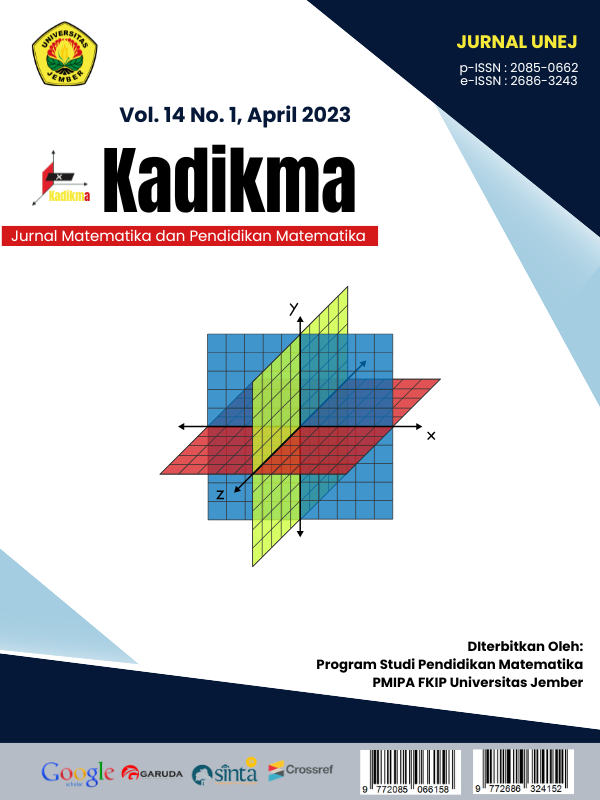PENGGUNAAN LANGKAH POLYA UNTUK MENGANALISIS KEMAMPUAN PEMECAHAN MASALAH DI SEKOLAH DASAR
DOI:
https://doi.org/10.19184/kdma.v14i1.39033Abstract
Students' abilities to solve mathematical problems are still limited, and they are not yet familiar with the topics being covered. The purpose of this study is to characterize students' abilities to resolve mathematical problems, particularly those involving geometry, according to the Polya progression. Research plan utilizing a qualitative approach with 40 students from Grade V at the State Primary School in Bireuen, Indonesia.Problem solving is seen as the crowning achievement of mathematics education since it focuses on developing students' reasoning and problem-solving skills in addition to their conceptual understanding. Students can apply their newfound knowledge and problem-solving skills in their day-to-day lives. The problem-solving process consists of four steps: identifying the issue, formulating a plan to address it, implementing that plan, and conducting follow-up evaluation. Therefore, the ability to create non-routine assignments and the creativity to transform routine text-book assignments into non-routine ones, as well as the ability to develop problem-solving instructional materials for use by students during instruction, are both necessary.


.png)
.gif)




